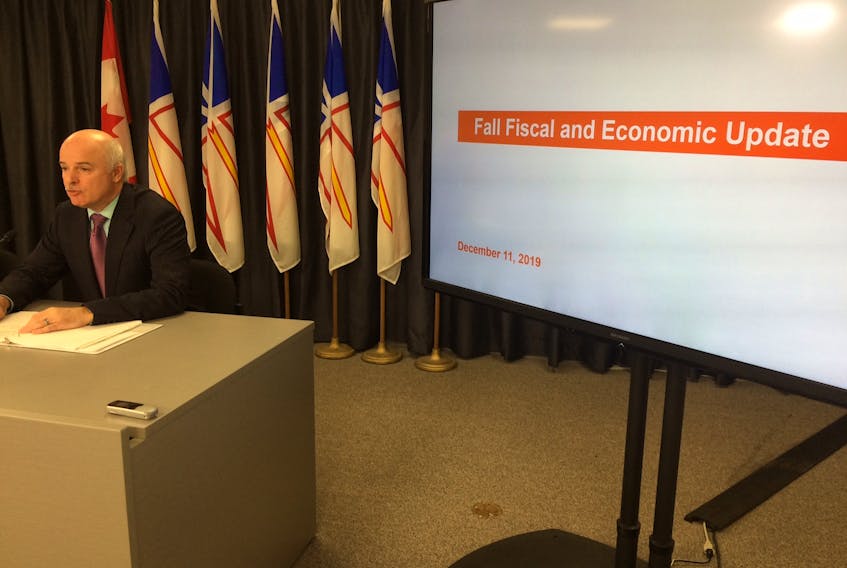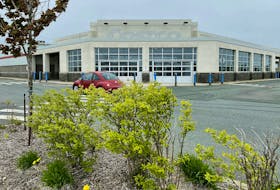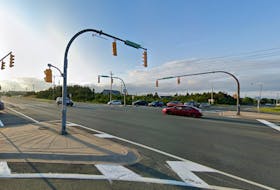ST. JOHN'S, N.L. — The Government of Newfoundland and Labrador is spending $943 million more than it is making.
On Wednesday, Finance Minister Tom Osborne issued the fall fiscal update, showing the deficit for 2019-20 had grown by $392.8 million, up from the $575 million projected in the 2019 budget document.
The number comes after discounting the total amount of the Atlantic Accord, announced last spring.
The increased deficit comes largely as a result of a two-month shutdown of the Hibernia platform, which kept $185-million worth of oil in the ground.
The net debt of the province also increased in the update, from $13.77 billion to $13.95 billion.
"I make no apologies for our balanced approach. There are no easy decisions in this process." — Finance Minister Tom Osborne
Osborne still aims for the government to return to surplus by 2022-23, announced as part of the Liberals' first budget in 2016, but concedes it's going to be tough to get there.
“I’ve not giving up on our return to surplus in 2022-23, but I want to be clear about the challenges we face in achieving that goal. I make no apologies for our balanced approach. There are no easy decisions in this process. No decision happens in a vacuum,” said Osborne.
“Everything we do has multiple impacts that cascade throughout the economy.”
Osborne made no indication that large-scale spending cuts are coming as a result of the continued deficits the province is facing. He pointed to the difficult politics of decisions to cut.
“I’m open to any ideas. Again, I’m open to sitting with any member of the legislature or any organization in the province, but, again, if you’re talking about a service in a particular area of the province, nobody wants that service cut, but they’ll ask you to look at something in another area. You go to that area and, you know, it is a challenge. There’s no doubt about it.”

Tory finance critic Tony Wakeham says the government is too reliant on oil and gas to fill provincial coffers.
“It really highlights, again, that we’re focused on oil revenue. They were elected five years ago, talking about diversifying the economy. They were going to talk about how they spend a million dollars on a U.S. company that was going to tell us how to diversify the economy, and yet we find ourselves here today focused on a drop in oil revenue and a significant deficit,” said Wakeham.
“I think (Osborne) hopes oil prices will go up. I think he hopes we’ll get more oil production. I have seen nothing that outlines any kind of a plan to do that.”
New Democratic Party Leader Alison Coffin says there are other ways to balance the budget that are being left out of the conversation.
“Not once have I heard anyone mention a wealth tax. Not once have I heard people say maybe (not) giving tax breaks to the tune of $40 million to a company that is otherwise profitable might be a way of getting more revenues in,” she said.
“We really need to think differently about how we are approaching balancing our budget.”
Key economic indicators
GDP growth: 3.1 per cent, down from 4.1 per cent in 2019 budget
Retail sales: shrink by 1.6 per cent, down from 0.9 per cent growth projected
Housing starts: 826, down from 1,117 projected
Capital investment: $9.4 billion, down from $11.3 billion projected
Population: 521,500, down from 524,300 projected
Unemployment rate: 11.8 per cent, down from 13.1 per cent projected
Oil price projections Budget 2019: C$84.94; Update: C$83.22
Richard Alexander of the Newfoundland and Labrador Employers Council says his organization isn’t calling for massive spending cuts, but something has to change.
“What we need in this province is reform. The current strategy, government’s current plan right now, is we’re going to hold spending essentially where it is. By doing that, what they’re having to do is go and borrow. The interest on the province’s debt, the province’s credit card, has increased in the last couple of years from $900 million to $1.4 billion,” he said.
“What that means is, there’s less money now to go into health and education. Now, it’s going to the banks. We’re paying interest on the province’s credit card. Reductions in services in education and health are already occurring with this plan, without reform. They need to restructure it, so they can afford to deliver better outcomes for people in the province.”
Alexander is backed up by the St. John’s Board of Trade. In a news release, the board says public debt is the largest concern for local business owners.
“Debt servicing is already our second-largest expenditure as a province,” board CEO Nancy Healey wrote.
“The status quo is not working, and government must stop the flood before our ship sinks.”
Twitter: @DavidMaherNL
Earlier story:
Hibernia losses raise Newfoundland and Labrador deficit to nearly one billion dollars in 2019
Oil production shutdown meant $185 million less revenue for the province
The financial deficit facing Newfoundland and Labrador in 2019 is almost one billion dollars.
The department of finance issued its 2019 Fall Fiscal Update on Wednesday, showing $368 million less in revenues for the province. The 2019-20 deficit is now $943 million.
Those numbers are obscured by money coming in from the Atlantic Accord. Government is registering a $1.55 billion surplus, down from $1.92 billion. That’s because the $2.5 billion in revenue from the Accord was all counted in the current budget, not reflecting the money will flow over 38 years.
Officials with the department say the decrease in revenues is largely attributed to a two-month shutdown at the Hibernia platform, following an oil spill near the rig earlier this year. The shutdown meant $185 million less revenue for the province this year, though officials cite the decrease as deferred revenue, considering the oil is still in the ground to be extracted.
The department of finance also updated its estimate for the price of oil, from CAD$84.94 per barrel in April to CAD$83.22 per barrel now. Each dollar difference in the estimate means $7.7 million for the province.
The update shows slower growth than projected for the province’s gross domestic product (GDP). Government had projected a 4.1 per cent growth this year, which has now been adjusted to 3.1 per cent.
The net debt for the province also continues to grow. Government had predicted $13.77 billion in net debt, growing now to $13.95 billion. Government will not increase its borrowing as a result of the drop in revenues, still on track to borrow $1.2 billion this year.
Osborne says government spending has only increased by two per cent annually, essentially matching the rate of inflation. Osborne says that’s a sign of fiscal restraint by government. Spending increased by $24 million, on $8.4 billion in government spending.
Population is also declining faster than predicted in the April budget. Government had estimated 524,300 people living in the province, which is now at 521,500. The 2020 economic forecast continues to show a decline in population, down to 520,800 next year.
The unemployment rate in the province saw a decrease from 13.1 per cent to 11.3 per cent. The national unemployment rate is 5.7 per cent.









